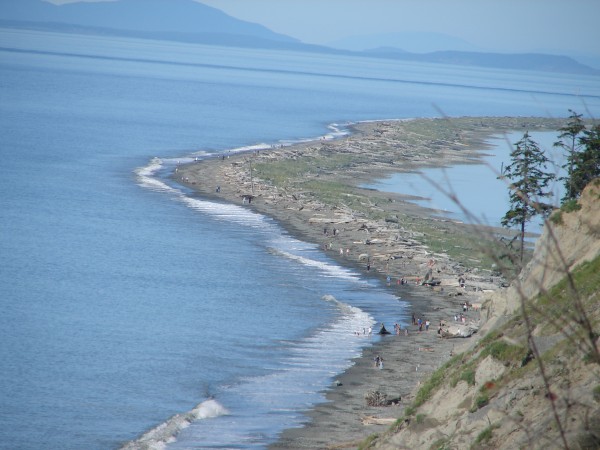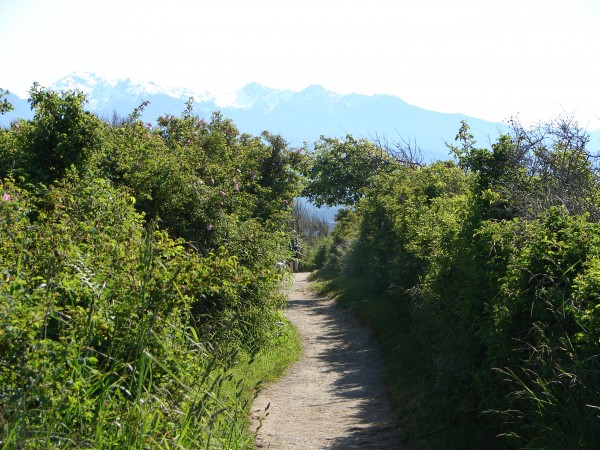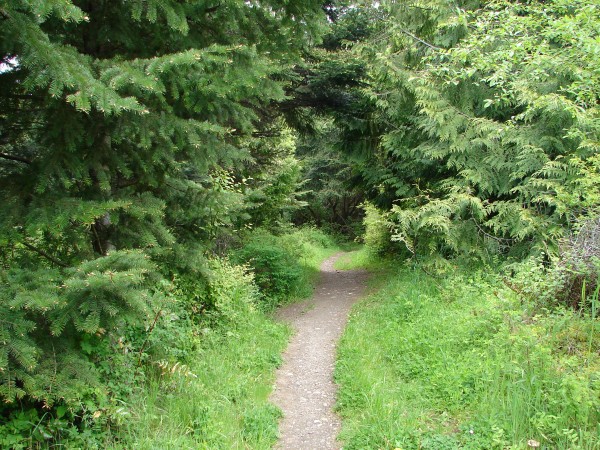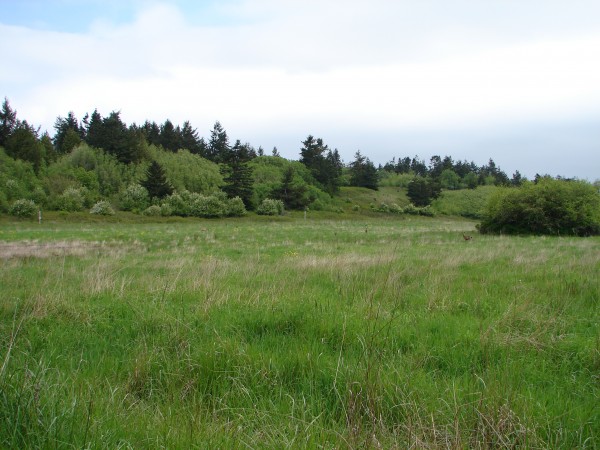The view of Admiralty Inlet from Fort Worden State Park affords a glimpse of the occasional passing submarine. A rain shower bathed it in a rainbow.
Views of Sequim, the Olympic Peninsula. . .and beyond
Fort Worden, located next to Port Townsend in Washington, was established in the late 1890s. Along with Forts Casey and Flagler, its purpose was to prevent hostile fleets from reaching targets such as the Bremerton Naval Yard and the cites of Seattle, Tacoma, and Everett. Construction of the fort began in 1897 and continued in one form or another until the fort was closed in 1953.
The Fort Worden Officer’s Row housing looks onto an open parade ground. The buildings were constructed between 1904 and 1915. To the far left, at the end of the row, is Admiralty Inlet.
Fort Worden, located next to Port Townsend in Washington, was established in the late 1890s. Along with Forts Casey and Flagler, its purpose was to prevent hostile fleets from reaching targets such as the Bremerton Naval Yard and the cites of Seattle, Tacoma, and Everett. Construction of the fort began in 1897 and continued in one form or another until the fort was closed in 1953.
The Fort Worden Officer’s Row housing looks onto an open parade ground. The buildings were constructed between 1904 and 1915. To the far left, at the end of the row, is Admiralty Inlet.
I love any excuse to go to Port Townsend, a neat town with an interesting maritime history that is about a 45 minute drive from Sequim. My boat lover husband often finds reasons that take us to ship’s chandleries or places like Edensaw Woods, a high level danger zone for anyone interested in wood or tools. But I digress. . .
Our latest trip found us exploring Fort Worden State Park which is next door to Port Townsend. The Fort is part of a network of early fortifications that guarded the nautical entrance to Puget Sound. The park is now used as a conference center with accommodations in historic military housing as well as camping and has a beautiful view of the Admiralty Inlet. I’ll share more views of the Fort Worden area in the next several days.
Dungeness Recreation Area is a wonderful place to walk and it’s particularly nice to observe the changing of the seasons. This past spring I took pictures of some of the native plants in bloom and remembered this as I’ve watched the season’s changes. Snowberries, shown here, are one of the interesting surprises.
Snowberries have very inconspicuous blossoms, 1/4 inch or less in size. Compared to many other plants in bloom in late spring, they’re the quiet girls at the back of the room. But come Autumn, it’s a very different story!
By summer’s end the blossoms turn to bright white 1/2 inch berries that form a sea of white on the many shrubs in the Recreation Area. They lighten the landscape with a brightness that looks like polka dancers masquerading as ballerinas. Paired with the common bright red rose hips, which I’ll show in another post, they’re an especially beautiful sight.
The folage of the snowberries are browsed by deer and elk. The flowers attract butterflies. And the berries are eaten by many birds and by winter’s end may also serve as a food source for other wildlife.


Couple more shots from over the weekend. It’s hard to see in the picture, but all along the trail and all over our campsite was little pink flowers (roses? rose hips?) and a whole bunch of buds getting ready to go. The top picture is part of the Dungeness Spit.


These are two parts of the trail I took at Dungeness Rec Area. In the second one when I came to the meadow three deer were looking at me, but you’ll have to squint to find them probably. Everything is so green still, not surprising with the weather we’ve had.